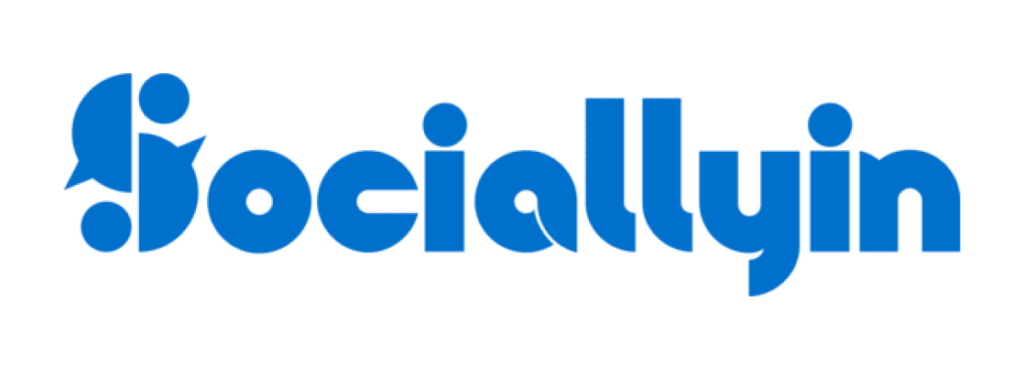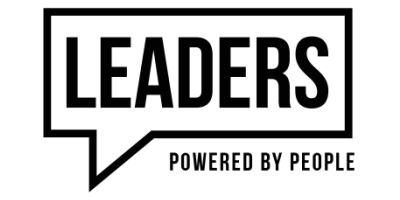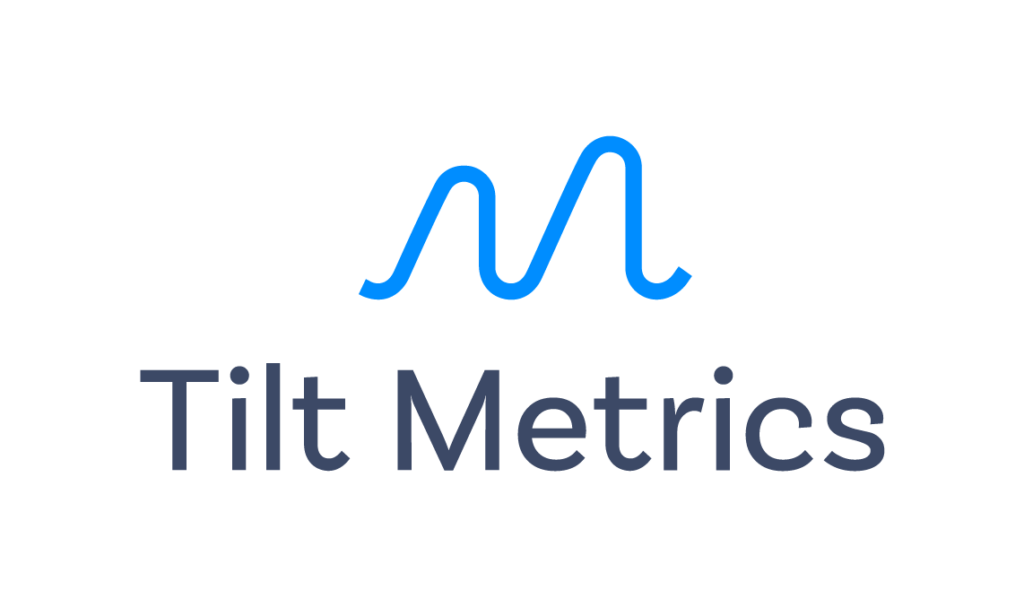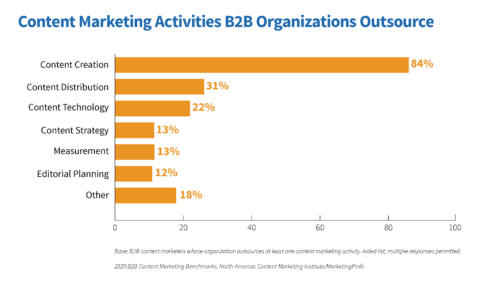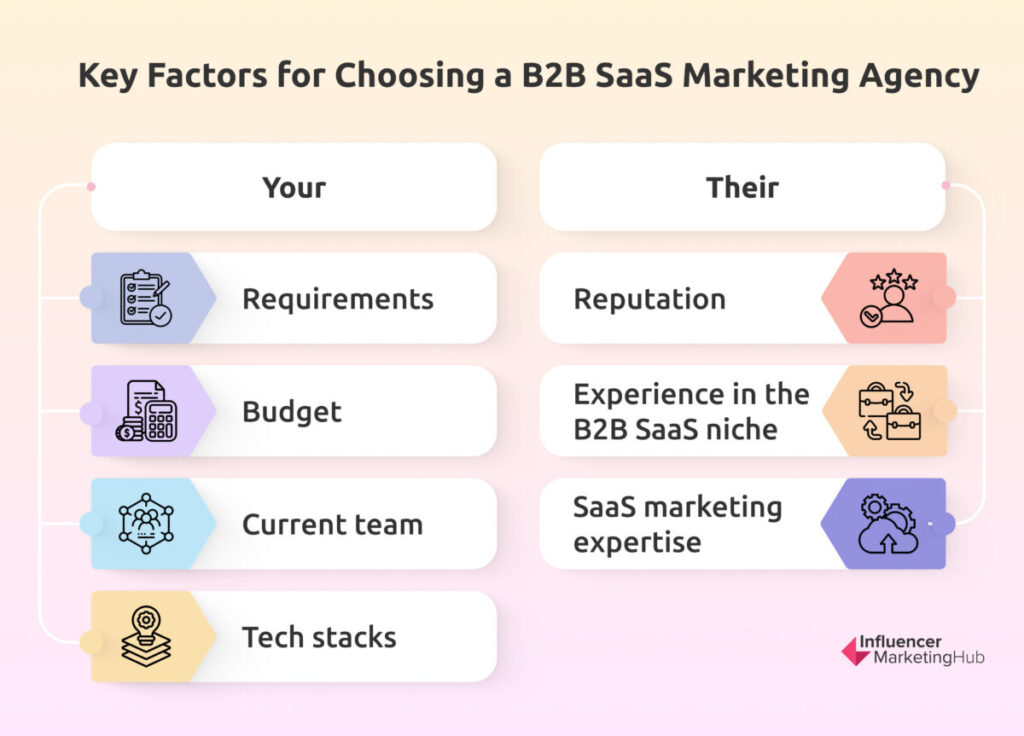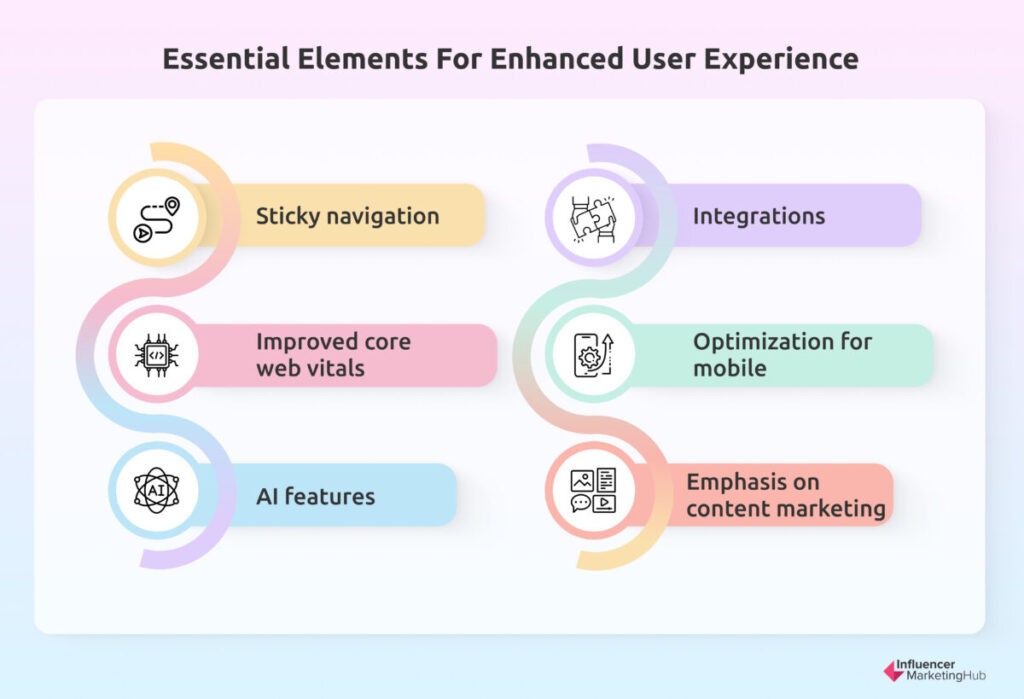Influencer Marketing Hub sets itself apart from conventional review platforms through the involvement of Digital Marketing experts such as Werner Geyser, Djanan Kasumovic, Camille Kennedy, Dave Eagle, and other notable industry figures. This expert team brings a profound understanding of the Digital Marketing landscape, assessing tools and platforms with an insider’s perspective on capabilities, experience, and industry acumen. Unlike user-generated review platforms, Influencer Marketing Hub’s evaluations are rooted in extensive firsthand experience and direct interactions with the tools and platforms in question. This ensures that the reviews are not only trustworthy but also deeply informed. High-caliber brands like Disruptive Advertising, Sociallyin, and SmartSites undergo rigorous monthly evaluations, highlighting the platform’s commitment to identifying and showcasing top-tier solutions in Digital Marketing and beyond.
Influencer Marketing Hub has consistently been recognized by leading media outlets for our authoritative data, findings, and insights within the Digital Marketing landscape. Our platform is frequently cited as a trusted source of information, demonstrating the value and impact of our work in shaping industry standards and practices.
Influencer Marketing Hub employs an expert-driven methodology to evaluate Digital Marketing agencies, ensuring that our recommendations are both reliable and comprehensive. This approach is designed to help businesses and individuals find the best agencies to meet their specific Digital Marketing needs. Here’s how we assess the various agencies like Disruptive Advertising, Sociallyin, and SmartSites:
Modern marketing is highly competitive, putting a huge strain on your marketing efforts. The challenge increases when marketing an intangible product without any physical presence. In the software-as-a-service (SaaS) industry, this is a common scenario. B2B SaaS companies face unique challenges in reaching and converting potential clients due to the complex nature of their products.
However, as an industry worth $317.5 billion and forecasted to be over $1,228 billion by 2032, the potential for profits in B2B SaaS marketing is massive. To tap into this potential, SaaS companies must partner with B2B marketing agencies that specialize in SaaS marketing.
Not only are these agencies proficient in the intricacies of B2B SaaS marketing, but they also have the resources and expertise to effectively promote and position a SaaS product in the market. Having said that, here are the 23 B2B SaaS marketing agencies for 2025.
Best B2B SaaS Marketing Agencies for 2025
Not all B2B SaaS marketing agencies are the same. Some excel in specific areas, while others offer a full range of services. Similarly, while some have a proven track record of success, others may be more innovative and experimental.
The key is to find the agency that is in line with your business goals and can provide the support and guidance you need to achieve them. Our compilation of the best B2B SaaS marketing agencies will help you find the right marketing agency for your SaaS marketing strategy needs
Location: Pleasant Grove, Utah | Founded: 2012 | Specialty: SaaS Marketing Agency Key SaaS Services: Content creation, PPC management (paid search and social advertising), SEO, social media management, email marketing, eCommerce, website optimization, lifecycle marketing Notable Clients: Adobe, PoliteMail, Tigerpaw, Americas Best Franchises, SlickText Disruptive Advertising is a B2B SaaS marketing agency that works with clients as their long-term growth partners. The agency identifies and connects with your Ideal Customer Profile (ICP) to ensure a direct and effective approach to reach your target audience. Disruptive Advertising With its data-driven strategies, the agency excels at every service it provides. One of the best things about Disruptive Advertising is that it keeps refining its process. In the words of Jake Gamble, development manager at Generations Home Care:
“My favorite part is that they continue to refine the process over and over again. They’re a team that’s never content with yesterday’s success.”
For SaaS companies in an ever-changing market, a partner like Disruptive Advertising, which is continuously focused on improvement, is a huge asset. Disruptive Advertising is a one-stop-shop for B2B SaaS companies that want to fulfill all their marketing goals under the same roof. Starting with SEO, the agency helps businesses reach the top of search engine results pages (SERPs) for their target keywords and drive organic traffic to their websites. They also specialize in search engine-specific campaign types, such as Google Performance Max. When it comes to ad creation, Disruptive Advertising really helps show the “software” side of your business by making your creatives innovative. Motion ads are a specialty of the agency, and they’re known to capture attention and drive engagement. If needed, the agency can also develop your whole creative strategy from scratch rather than simply improving or supplementing it. Since the average open rate for emails is as high as 86% for welcome emails, it’s understandable why email marketing is still hot in digital marketing. Disruptive Advertising helps clients leverage this channel by creating personalized, high-conversion email campaigns that help nurture leads and drive conversions. The agency also specializes in programmatic advertising and keeps up with the latest AI marketing technologies. Its strategy experts can assist SaaS brands in using AI to target their audiences better and increase marketing efficiency. Disruptive Advertising has a five-step process that has been tested and proven to help its clients achieve their B2B marketing goals. It all starts with a discovery call in which the client tells the agency about their business goals. Next comes the solutions call, during which Disruptive Advertising’s experts audit the client’s current strategy and provide expert insights. Disruptive’s process Then, the client works with the agency’s marketing team to implement the recommended strategies. After implementation, Disruptive Advertising conducts regular reviews and optimizations to ensure continuous improvement. The agency also defines your growth strategy and assists your team in scaling campaigns as needed. Disruptive Advertising used this exact approach when assisting Arena, a simulation software provider, in generating a quality return on ad spend. The company was struggling with optimization issues like increased bot or spam traffic, a low return effect, and bad placements of display ads. Strategic Approach: Disruptive started by improving the company’s audience targeting. First, the agency used Google Click ID to implement a full-funnel lead tactic. Following that, Disruptive experts updated the audience exclusion and audience lookalike lists. By using custom affinity and in-market audiences, Disruptive was able to reach the right people at the right time with relevant messaging. These tactics resulted in reduced expenditure on junk leads. Arena case study results The results were pretty impressive as Arena generated a 40% higher conversion volume and revenue than the target they gave Disruptive Advertising. Plus, the pipeline value increased by 14.81%, going from $2.7 million to $3.1 million. Location: Atlanta, Georgia | Founded: 2011 | Specialty: Social Media Marketing Key SaaS Services: social media strategy and management, community management and listening, content production, paid social advertising, influencer marketing, social selling, data analysis and ROI modeling, AR services Notable Clients: NetApp, Incomm, First Trade, Clinical Trial Media Sociallyin bridges businesses and prospective clients through the influential platforms of LinkedIn. The agency emphasizes a robust, AI-driven LinkedIn lead generation that scales efficiently, ensuring businesses reach out and resonate with highly qualified leads within their specific niches. Every outreach is engineered with precision, utilizing high-performing data accumulated from thousands of successful LinkedIn campaigns across various industries. One of the eminent features of Sociallyin is its ability to streamline connections. Through the Social Selling Automation service, the agency utilizes AI to target and engage decision-makers, drawing them directly into the client’s sales funnel via LinkedIn. The comprehensive process includes creating a custom A/B messaging sequence, real-time reporting, and data-driven campaign strategy enhancements. This ensures that businesses can focus on what matters most – selling, while Sociallyin takes the helm of connecting and engaging potential leads. With a LinkedIn Certified Support Team at the core, Sociallyin amplifies its offering, ensuring every campaign is delivered and optimized for maximum impact. The agency offers various plans tailored to cater to diverse business needs and scales. Each plan features prospect outreach, active campaigns, auto follow-ups, AI-driven message organizing, and a dedicated client success team. Premium clients enjoy the VIP treatment, ensuring that their campaigns are not just executed but are the pinnacle of personalization and efficiency. Sociallyin isn’t just about automating connections; it’s about automating meaningful engagements that convert. It’s more than an agency; it’s a partner that understands the intricate nuances of social media, transforming every outreach into a potential business opportunity. With a portfolio showcasing significant brands and positive client testimonials, you can expect Sociallyin to be your preferred partner for aiming to unveil social media’s true potential and capacity. For instance, in a nine-month campaign, Sociallyin exceeded the Mellow mindfulness app’s goal by achieving nearly 50,000 fitness app downloads, while also reducing the cost-per-install to $4.67, surpassing the 25,000 download target. Location: Paramus, New Jersey | Founded: 2011 | Specialty: Full-Service Digital Marketing Key SaaS Services: Website design and development, PPC (paid search and social advertising), SEO optimization, email and SMS marketing, social media management Notable Clients: Agile Data Sites, Anexio, Flight Courtier SmartSites is a full-service digital marketing agency that caters to B2B SaaS companies in different industries. While SmartSites offers a range of digital marketing services, they are particularly well-suited for SaaS companies looking to scale their online presence through targeted paid advertising, effective SEO strategies, and expertly crafted websites. SmartSites The agency—a Google Premier Partner and Facebook Marketing Partner—has been recognized as a seven-time Inc5000 fastest-growing company. For a B2B SaaS business, their website is the primary lead generation tool. At SmartSites, the team of experts helps SaaS businesses unleash their marketing potential with responsive and user-friendly websites. The agency claims that its web design services ”will make a lasting impression to those who chanced upon your site.” Moreover, SmartSites is a WP Engine partner, which means its clients get access to a trusted hosting provider for their websites. A good example of the agency’s web design expertise is the revamp it did for TRAXPayroll, a payroll and HR services provider. Previously, the client’s website was a bit complicated to navigate and did not provide visitors with the information they needed. Strategic Approach: SmartSites created a custom one-page website for TRAXPayroll so that their visitors do not have to navigate through multiple pages. The agency also created a client portal for TRAXPayroll, allowing their users to access their payroll through a secure platform. As the user experience improved, so did TRAXPayroll’s lead generation. TRAXPayroll website redesign SmartSites also specializes in SaaS SEO, assisting SaaS businesses to stay visible in major search engine results. With the agency by your side, you can expend your time and resources on core business operations. Additionally, SmartSite takes care of social listening and review management for SaaS businesses. The agency’s partnership with Okendo, a review management software, further streamlines this process. As for the paid side of things, SmartSites provides PPC services to help SaaS businesses attract clients. Since SmartSites is in the top 2% of PPC specialists and is a Google Partner, you can rest assured that your ad budget will be well-spent. When B2B SaaS clients reach out to SmartSites, they can expect a comprehensive approach to their marketing needs. For example, when it comes to website design, the agency does everything from logo and graphic design to custom development, automation, content writing, and SEO marketing. SmartSites SaaS growth services The same is true for its PPC and SEO services. Whatever a SaaS business could possibly need, the agency provides. Proxy Key is one of the many clients that have benefited from SmartSites’ approach. As a leading provider of private proxy services, Proxy Key needed a host of digital marketing solutions, including a logo, website copy, website redesign, keyword research, technical SEO improvement, a link-building strategy, and more. Proxy Key case study results Strategic Approach: SmartSites handled everything in-house, providing effective and timely solutions that helped Proxy Key boost its organic traffic by 297%. The agency redesigned the client’s website, implemented a billing system, conducted keyword analysis, improved the site speed to 0.59 seconds (from a concerning 4.20 seconds earlier), and even provided ongoing maintenance and support. In doing so, SmartSites cemented itself as a true full-service digital marketing agency and proved its capability to deliver tangible results for its clients. The agency’s approach was simple: creating a comprehensive and integrated online presence for Proxy Key. SmartSites kept SEO and audience demands in consideration to ensure the website was user-friendly and highly optimized for search engines. The result? A happy client with increased website traffic and low cost per click. Location: New York, NY| Founded: 2013 | Specialty: Full-Service Influencer Marketing Agency Key SaaS Services: influencer marketing (with fraud detection), social media marketing, branding, campaign strategy and planning, whitelisting, performance tracking and analytics Notable Clients: The Smile Generation, Greenvelope, Blued The Shelf is a full-service agency that specializes in influencer marketing. Its team creates meaningful connections, experiences, and content for its clients through the unique expertise of professional storytellers worldwide who engage virtually with other professionals in their field. As a company specializing in mobile app marketing, The Shelf knows what it takes to generate downloads. It uses a proprietary natural language processing and machine learning (ML)-powered SaaS platform and a jam-packed toolkit that includes everything from content marketing strategies and creative production down to analytics monitoring. This client portal keeps tabs on how your brand’s influencers are performing and ensures that your content is being consumed as intended. For instance, for their client, a renowned app known for connecting users with businesses, they launched a campaign to promote their new Black-Owned Business Attribute feature. Their strategy involved enlisting influencers to highlight this feature during Black History Month, focusing on both raising awareness and supporting Black-owned businesses amidst the challenges of COVID-19 and economic inequality. The results were outstanding, with a 54.8% engagement rate and clicks exceeding goals by 246%, demonstrating the power of influencer marketing in driving meaningful social and business impact. Partnering with The Shelf as a SaaS marketing agency allows you to tap into a host of other marketing services like content quality control, lead gen campaigns, online ads, and social media management, among others. With that said, there is no one-size-fits-all approach to marketing with The Shelf. Its client relationships are tailored to specific business needs. Location: Austin, Texas | Founded: 2014 | Specialty: Content Creation and Paid Media Strategies Key SaaS Services: Growth Strategy, Channel & Audience Segmentation, Media Buying, Community Management, Content Creation, Influencer Marketing Notable Clients: Gillette, DC, Warner & Bros, Netflix, Stanford University, Gopuff Featured in BBC, Forbes, Vox, and The New York Times in golden words, Iron Roots is an award-winning social media agency that helps B2B SaaS companies grow their online presence. From brand development to social media advertising, the agency helps clients build a strong community of engaged users. The distinct feature of Iron Roots is that it works as an extension of your team rather than an external agency. Plus, the agency claims to ‘’measure your company’s metrics with style,’’ which is essential for an optimized marketing initiative. Due to this integration, the agency can provide end-to-end growth strategies that are aligned with the client’s overall business goals. Growth is an integral component of any SaaS company’s marketing strategy, and that’s exactly what Iron Roots delivers. The agency uncovers customer behaviors, channels, motivations, and needs through iterative testing to develop a growth strategy that drives results. B2B SaaS clients can benefit from the agency’s comprehensive experimentation framework, which helps them identify and optimize their key growth channels. The agency also stays by your side during the customer onboarding and lifecycle stages. Since data is the central element of growth, Iron Roots uses a robust data infrastructure to operationalize performance metrics in its clients’ marketing decisions. The agency’s pixel setup is instrumental in identifying new segments and areas of opportunity. Iron Roots services Plus, Iron Roots conducts event and attribution mapping to provide clients with a comprehensive overview of their customer journey and touchpoints. Its experts also assist B2B SaaS businesses in finding the ideal audience segments and channels. Our Influencer Marketing Benchmark Report found that 57.5% of businesses now use third-party influencer marketing platforms, a significant increase from 44.6% in 2022. Iron Roots serves as a third-party platform for B2B SaaS companies, managing the entire influencer campaign process from strategy to execution. 3rd-party platform usage in influencer marketing Media buying is another core service of Iron Roots. From defining ad auctions and setting budgets to positioning your brand and choosing high-converting copy and ad aesthetic, Iron Roots does it all. The agency manages the whole campaign architecture, eliminating the need for its clients to stress over ad optimization. When required, Iron Roots also creates visual assets for these campaigns, such as this video the agency created to celebrate a client’s signature of The Climate Pledge. Iron Roots has a simple approach to getting to know the client’s business before creating a customized growth strategy. There’s often a disposition to rush into tactics, but Iron Roots insists on understanding the business holistically to develop a powerful data-driven growth plan. For example, when working on a campaign for Netflix, Iron Roots realized that for a brand of this size, small-scale social media campaigns would not produce significant results. Strategic Approach: Instead, the agency flew the top comic influencers from around the world to NYC for a social media activation campaign for the Netflix series “The Defenders.” Since this was a Marvel series, Iron Roots targeted influencers who had a strong following among comic book fans. In-person social media activation by these social media influencers ensured that the content reached the right audience who would be interested in the series. Netflix case study results The agency further supplemented this in-person activation with a targeted Instagram and Facebook ad campaign, resulting in 5.2 million social media impressions in just a day of the campaign activation. With Iron Roots’ personalized approach, the series gained 5 million average viewers in the first week of the premiere. Location: New York City, New York| Founded: 2017 | Specialty: SaaS Product Design Key SaaS Services: SaaS MVP, Product Analytics, Brand Guide Creation, UI/UX Design Notable Clients: Samsung, Funne, Octo Duck.Design stands out among B2B SaaS Marketing agencies with its focused approach to SaaS product design. This agency is not your typical marketing firm; it specializes in transforming service businesses by turning concepts into actionable product documentation, a crucial step in gaining a competitive edge in the fast-paced SaaS market. Duck.Design Having served big names like Octo and Logitech, Duck.Design knows how to position any B2B SaaS product, regardless of its expanse or customer diversification. Duck.Design can do anything and everything design-related for B2B SaaS businesses. Starting with graphic design and motion graphics, the agency specializes in illustrations and animations that make the product stand out. Not only do the agency’s designers develop creatives for website design, but they also help create assets for advertising and marketing. In fact, they claim that your imagination is their canvas. SaaS businesses need a strong identity to stand out in the saturated market. Duck.Design helps them do so by mastering brand identity and design. However, these design services aren’t limited to the digital world. The agency also provides print, packaging, and merchandise design services for physical-world marketing. On the digital side, services like app, UI, UX, and website design further enhance the brand’s positioning in the market. Speaking of enhancement, landing pages, despite being the least popular signup form, have the highest conversion rate of up to 23%. The agency has a history of creating stunning pages, such as those for Dark Fusion, a dApp business, to help clients maximize conversion rates. Duck.Design also knows that using optimization software is an excellent way to boost the conversion rate optimization of your landing pages up to 30%. However, with Duck.Design, SaaS businesses do not have to worry about technicalities since the agency’s team of experts can create optimized landing pages that are visually appealing and convert well. Duck.Design also offers SaaS MVP design services to attract investors and first users. SaaS businesses can expect a development-ready product from the agency, which allows quick and cost-effective idea validation. The agency also specializes in simplifying complex SaaS concepts for investors and customers. The video they created for Aktien Guide is an excellent example. On top of that, they measure product performance and identify bottlenecks for growth to show B2B SaaS businesses where they can improve. It doesn’t end there. Duck.Design joins your team and works side-by-side on your SaaS product design. Whether you need assistance in lowering the churn rate or improving activation, the agency is there to help. Duck.Design’s approach begins with work for its clients to clarify the product vision and research their target audience. The agency then strategizes how to get its clients’ products to the top of their respective industries. Depending on the insights the agency has gained in the first steps, its designers create information architecture, user flows, and interface layouts for the SaaS product. As for the UI design, the agency establishes a visual style that reflects the brand’s identity. For example, when creating a brand identity for Functional Analytics, an own production platform, the agency kept the design clean and clutter-free to reflect the company’s innovative spirit. Even with such an excellent service provision, Duck.Design doesn’t put too much strain on its clients’ pockets. In fact, the agency claims to be 30% more affordable than its competitors. Also, the fast turnaround time of 12 to 24 hours means clients can quickly validate their ideas and get their products to market faster. An excellent example of Duck.Design’s work is the design job the agency did for Naoris, a protocol that powers Decentralized Physical Infrastructure Networks (DePINs) for multiple industries like healthcare and defense. The client wanted their designs to be elegant and audience-centric. Strategic Approach: Duck Design built a design strategy for the company from scratch. The agency focused on social media post design and typography to give the client a strong brand identity. Since the company is in the crypto industry, Duck Design used a dark-themed and futuristic approach to reflect the cutting-edge technology the client offers. They also created a business card design that incorporated the company’s logo and brand colors for a cohesive look. The new designs not only enhanced the company’s online presence but also provided an improved user experience, leading to better engagement with potential clients. Locations: London, New York, Dubai, Singapore, Hong Kong, Vilnius | Founded: 2017 | Specialty: Social Media Marketing Key SaaS Services: social media marketing, influencer marketing, PPC management, inbound marketing (SEO, content creation including video), affiliate marketing, email marketing, website optimization Notable Clients: Bitcoin.com, Dash, Polkadot, Iqoniq, BankSocial, BitForex SaaS companies looking to improve their digital presence and engage with their target audience can turn to NinjaPromo’s seasoned marketers to develop a strategy anchored on their unique value proposition (UVP) and customer pain points identified through market research and competitor analysis. NinjaPromo recognizes how critical customer onboarding is to B2B SaaS firms’ growth, offering services such as video production, community management, and mobile app design and development to make self-paced learning and feedback available between providers and users. For a new fan engagement platform targeting sports and entertainment fans, NinjaPromo executed a comprehensive campaign, focusing on creating engaging content and increasing brand awareness. Their multifaceted approach included press releases, 24/7 community management, an explainer video, social media rebranding, and influencer partnerships, resulting in a 3x subscriber growth, over 700,000 monthly impressions, and a 250% increase in brand awareness, showcasing the effectiveness of a well-rounded promotional strategy. Acting like a wise guide in the complex world of digital marketing, NinjaPromo can kickstart a brand’s digital presence, develop a strategy, create content, and engage with brand fans. They are comfortable working with all major platforms such as Facebook, Instagram, X, YouTube, and LinkedIn. Location: Pittsburgh, Pennsylvania| Founded: 2011 | Specialty: Website Design Key SaaS Services: website and landing page analysis, design, development (for WordPress and Shopify), redesign, conversion rate optimization (CRO) Notable Clients: EncompaaS, AlayaCare, Artera, BetterCloud Your SaaS website must be compelling, modern, and intuitive to attract customers. Huemor helps clients create memorable online experiences with its unique approach to web design that’s meant to outshine the competition. Its simple, transparent, and customer-centric processes attract clients to its services. The company boasts that over 54% of clients report longer website lifespans. Its partners also reportedly experienced growths of over 94% in conversions and over 91% in generated leads after their website redesign projects. Take the word of Will Weinraub, the product marketing head for net2phone, an IDT technologies subsidiary providing innovative VOIP services for small-to-medium–sized brands. He chose to work with Huemor because of its approachable nature and stellar portfolio. net2phone, which had difficulty communicating its unique and innovative solutions, soon had a modern and interactive website that increased leads by 1348%. Location: Houston, Texas | Founded: 2006 | Specialty: Full-Service Marketing Key SaaS Services: SEO content strategy and writing, off-page SEO outreach and link building, paid advertising management, product positioning and analytics analysis, onboarding management, website design and development Notable Clients: StealthSeminar, Keen, Hellopeter, EZTrackIt, SmarterSelect, Raaft Inturact provides consultation and full-service B2B SaaS marketing services designed to increase reach, engage customers, and drive revenues. Onboarding optimization—review, design, and content development—may be its flagship service. However, the agency also offers growth services, including business audit and growth support through its user interviewers, sales outreach pros, data analysts, writers, search engine optimizers, web designers, and developers. Inturact has worked with several clients, including StealthSeminar and Keen. StealthSeminar, a B2B SaaS automated webinar platform, saw a 33% increase in monthly customers by following Inturact’s advice to switch from an upfront payment acquisition model to an optimized free trial acquisition model. Keen, an event data management software, witnessed a healthy 50% organic growth (blog traffic) boost after working with Inturact’s marketing experts. Location: San Francisco, California | Founded: 2012 | Specialty: Digital Marketing Key SaaS Services: paid search and social, programmatic advertising (connected TV and podcast networks), mobile app advertising, product feed management, eCommerce management, social media management, fraud and brand safety, video content production Notable Clients: Paycor, Getaround, Zenefits, ServiceMax, Optimizely, Workday Adaptive Planning If you’re looking for a performance marketing agency that has managed over $500M in client ad spend, Metric Theory is the best B2B SaaS marketing agency for you. With more than 400 notable clients like GoFundMe, Lyft, and Too Faced, you can be sure that your advertising dollars are in good hands. It has globally established partners in programmatic media (including outdoor advertising, including Quantcast), audience management (like Tealium and LiveRamp), verification (data privacy compliance like Bombora), search (marketing intelligence such as Integral Ad Science), account-based marketing (DemandBase and Terminus), and lead (Integrate) and tag (Marketo Measure) management. You can track and view your campaign’s performance and analytics (during pre-launch test and live) through the agency’s Compass dashboard. One featured client, Team Snap, discovered that when Metric Theory took over their paid media platforms like YouTube and AdWords, the app’s B2B leads increased by 300%. As a result, the app, which targeted sports teams, could acquire new customers and increase the rapid adoption of its platform. Location: Newport Beach, California | Founded: 2007 | Specialty: Full-Service Digital Marketing Key SaaS Services: inbound marketing, sales enablement, eCommerce marketing, web CMS, creative and branding Notable Clients: Topia, UNiDAYS, Quotit SmartBug Media is a customer lifecycle marketing agency that helps its clients increase qualified leads and revenue, optimize resources, and align marketing and sales by setting up an ROI-focused digital marketing infrastructure. Its SaaS experts take your UVP and focus on your target vertical to formulate an effective demand-generation strategy. They then simplify and streamline your tech stack through automation and integration as well as make your SaaS brand stand out with persona-targeted content. Moreover, the agency customizes a sales enablement plan, which synergizes your marketing and sales team in converting the right leads at the right time. SmartBug harnesses the capabilities of HubSpot throughout the process, from content management to tech migration and customer success. One of their featured clients, Spotlight, had difficulty activating free trials for their cloud-based SaaS solution to fix SQL Server environment issues. As a highly technical app, Spotlight relies on leads experiencing the free trial environment to sign up as committed customers. SmartBug created automated workflows to help convert these leads, resulting in a 39% MQL-to-SQL conversion rate and a 159.25% revenue increase. Location: Bedford, Texas | Founded: 2013 | Specialty: Full–Service Digital Marketing Key SaaS Services: content marketing, analytics, PPC and retargeting, SEO, social media marketing, HubSpot management, website maintenance and refresh Notable Clients: MeazureUp, Emissary, Sapience Analytics, Text2Drive, TrueFort Bay Leaf Digital believes your SaaS analytics is a gold mine. Its analytics professionals study traffic, conversions, quality, and cost to help clients increase their MRR (monthly recurring revenue). The agency helps halve your lead generation costs and double your conversion rates by looking at your goals and product-market fit. This way, its team can craft a suitable marketing plan and identify your priorities, including positioning your content and offers to the appropriate job roles and businesses. One of the featured case studies on its website involves helping Acctivate connect and automate its email marketing and CRM platforms to increase website–qualified leads while effectively managing the time of the sales and marketing departments. Monthly promos, thought leadership guides, and videos created interest among 24% of formerly dormant but retargeted leads, eventually earning the inventory management software provider over $61,000 in revenues in three months. Location: Provo, Utah | Founded: 2012 | Specialty: Full-Service Digital Marketing and Advertising Key SaaS Services: paid advertising, organic marketing, campaign management and analytics, design (web and app design and development, photography, videography) Notable Clients: Zark, BambooHR, TaxBit Wallaroo Media started as an SEO and content marketing agency that rapidly evolved into a leading full-service digital marketing provider, helping B2B SaaS companies scale through brand awareness campaigns and online ad optimization. The agency specializes in creating paid ads for companies of any size but also offers assistance in creatives and relationship-building with investors and creditors. It helped Acorns, an app that automatically invests your spare change, reach the right market using Facebook and Twitter, resulting in the app being named Mashable’s #1 App of the Year in 2014. Location: London, UK | Founded: 2016 | Specialty: Growth Marketing Key SaaS Services: inbound marketing, sales enablement (HubSpot CRM and sales tools implementation), customer success (insights, referral strategy) Notable Clients: Cisco, Hotjar, Insightly, Pipedrive, QuestBack Take out the guesswork of growing your SaaS company with Cobloom‘s expertise and experience. As a team of former bootstrapped SaaS founders who have successfully sold their own SaaS startup, the Cobloom team knows what it takes to grow a SaaS company until investors take notice, fund it, and eventually buy it. Cobloom generates thousands of qualified and engaged leads to help SaaS companies achieve the next level of success. As a HubSpot partner since 2013, the agency uses this marketing automation platform to implement full-funnel marketing for clients. Like a security software company that went from 0 to 10,000 organic leads in two years, you can achieve measurable exponential growth. Or, if you’re struggling with getting the right leads, you can follow Scale’s example. The resource management software struggled with getting new customers to sign up, and Cobloom helped them lower their CPA while increasing their lead quality in just under 31 days. Location: Sarasota, Florida | Founded: 2006 | Specialty: SEO & PPC Key SaaS Services: SEO, market analysis, PPC management, analytics, ad creative Notable Clients: JotForm, VNTANA, Bidsketch, Segment, Unsplash SimpleTiger is the best B2B SaaS marketing agency for companies looking to grow their SEO and PPC initiatives. Clients trust the agency to rank pages and increase site traffic, thanks in part to its proprietary AI & data intelligence platform. At the same time, its team uses nearly two decades of industry experience to build you a roadmap based on the organic growth levers and potential impact identified by research. JotForm, a leading online form-building platform, saw a 50% boost in website traffic and a 120% increase in conversions with the agency’s help. JotForm experienced a 597% increase in traffic to its primary target page when SimpleTiger raised this client’s site ranking to the 1st page of Google Search Results within two months of their engagement. Location: Seattle, Washington | Founded: 2018 | Specialty: Full–Service Digital Marketing Key SaaS Services: GTM strategy and workshop, SEO and content marketing, paid media, design and branding, website development Notable Clients: CPGvision, triValence, Aware360, Patch, Zippity, iControl, Beezy, Ascend Kalungi provides distinct marketing strategies for B2B SaaS companies that want to experience T2D3 (triple, triple, double, double, double) growth. T2D3—a term coined by prolific investor Neeraj Agrawal in 2015—refers to the trajectory of successful tech startups, which tripled their annual revenue for two consecutive years and doubled it in the next three. When you partner with Kalungi, you receive full-stack, instant support through any stage of marketing maturity. Clients also get access to its OKR (Objectives and Key Results) management tool to view priorities and progress at a glance. The app sends weekly executive summaries to your inbox. As Arrowstream can attest, Kalungi could quickly assemble its “army” of experts to work on various aspects of a brand’s marketing operations. The agency drastically increased the pace of this food service supply chain software provider’s initiatives, some of which started two years before it asked for the agency’s help. They include fixing Arrowstream’s website and aligning marketing campaigns with sales goals to hasten their launch. The company CEO noted that amid the changes, his LinkedIn account’s supply-chain followers grew 50% in one month. Location: Tel Aviv, Israel | Founded: 2009 | Specialty: Influencer Marketing SaaS companies need to stay competitive and stand out from the crown when it comes to the B2B marketplace. Fortunately, LEADERS has the industry expertise to help create a marketing strategy tailored to your specific needs. While their featured case studies are not SaaS companies, the work of LEADERS is still highly relevant and can be applied to B2B SaaS companies. The Samsung Israel campaign launched the Z-flip phone while centering on creativity to showcase the phone’s photography features. With the help of A-list celebrities and nano-influencers, Samsung built a team of brand ambassadors that generated a reach of 8 million people. LEADERS has the ability to understand the SaaS market and what marketing tactics work best for it. They’ll help you find the right influencers to promote your product, as well as create engaging content that will resonate with your target audience. You can be sure that they are a trusted source of marketing advice and services. Location: Boston, Massachusetts | Founded: 2014 | Specialty: Paid Ads and SEO Key SaaS Services: PPC management (paid search and social), SEO, social media management, ad creatives production, website optimization Notable Clients: Ingram Micro, Astra, MojoTech, CloudApp, Sigura Tilt Metrics is a boutique marketing agency that focuses on helping B2B SaaS companies generate awareness, build trust and authority, and convert qualified prospects. To do this, they leverage SEO and paid media. While LinkedIn is generally regarded as the main platform for B2B brands, the agency believes you can reap benefits from applying its automated features for lead generation campaigns on Facebook, YouTube, Google, LinkedIn, and Instagram. For example, if you want to use Facebook and Instagram, Tilt Metrics can create ads to drive signups on demand. Then, to ensure that you make the most of the new traffic, its team can also assist with conversion rate and landing page optimizations. The company’s results speak for themselves. From helping clients validate their minimum viable products (MVPs) to lead generation, Tilt Metrics has used paid search and social ad campaigns in various effective ways. For example, when Astra, an automation platform for money transfers, approached them to increase mobile app signups, the agency managed not only to get more signups but also to reduce costs. Tilt Metrics did this by focusing on audience targeting, messaging, and ad creatives. The result — 10,000 signups at half the price. Location: Irvine, California | Founded: 2014 | Specialty: Performance Marketing Key SaaS Services: PPC management (including paid search and social advertising), content and SEO, lifecycle marketing, creative (including video), go-to-market (GTM) strategy Notable Clients: WordPress, Sumo Logic, Seagate Technology, OneSpan Directive Consulting is a premier B2B SaaS marketing agency specializing in performance marketing with a unique focus on customer-led strategies. It understands that the key to both immediate and long-term success lies in putting the customer first, and this principle underpins all its marketing efforts for SaaS clients. Directive Consulting The agency’s expertise lies in driving growth in organic traffic, generating qualified leads, and building a robust pipeline for its clients. To date, Directive Consulting has generated over a billion dollars in revenue for more than 420 clients. Its team of 100+ marketing strategists, designers, and developers operates with an innovative mindset to tailor client strategies to the latest trends. The agency’s focus on first-party data in the wake of a cookieless future is a good example of this. Directive Consulting offers end-to-end marketing optimization, from planning and budgeting to execution and analysis. It uses financial modeling to ensure you reach your revenue goals. Also, its tech marketing experts specialize in what they call “Customer Generation” to ensure your brand’s buyer profile dictates your content strategy. Directive Consulting’s services The agency’s paid media services are a core offering with a focus on PPC management for Google Ads. With a data-driven approach, Directive Consulting helps B2B SaaS clients leverage the power of paid marketing to drive qualified traffic and leads. In terms of content creation, the agency offers a range of solutions, such as content strategy development, creation and optimization, and distribution. Directive Consulting also manages SEO efforts for its clients, focusing on technical SEO and on-page optimization. For clients that want a more comprehensive approach, Directive Consulting provides full-fledged marketing operations handling that includes MAP audit, MAP optimization, lifecycle visualization, offline conversion tracking and reporting, lead scoring, and lead routing. The insights Directive Consulting collects during these marketing operations are used to further build a “leak-proof lifecycle funnel” that ensures no prospect falls through the cracks. Directive Consulting’s services Even better, the agency also provides go-to-market strategies for new SaaS offerings. For such clients, the agency conducts competitor assessments, collects 1st-party data, develops customer personas, and provides financial modeling to help with pricing strategies and overall product positioning. Its experts also connect with fellow SaaS marketers to learn from them and borrow insights to make their clients’ campaigns successful. Directive Consulting promises a “truly differentiated approach” to marketing. By that, the agency relies on strategic insights and data-informed decisions to drive marketing campaigns rather than just relying on creativity alone. The agency’s expertise in doing so is exhibited in its campaign for Seagate, a SaaS company that introduced cloud computing services with its Lyve Cloud. To bring organic visibility to the brand, Directive Consulting had to make Seagate rank for a highly competitive keyword, i.e., cloud computing. Strategic Approach: Directive Consulting created a content pipeline for the client, focusing on cloud-related keywords. The strategic aspect of this campaign was to focus on the same CTA (promoting the Lyve Cloud solution landing page) irrespective of the type of content published on the client’s website. With all content pieces pointing towards the same CTA, there was a sense of consistency and cohesion across the website, making it easier for visitors to navigate and take action. Seagate case study results During this campaign, the agency also iterated the content workflows to achieve the best possible outcomes for its clients. As a result, Seagate’s website experienced a 45.2% increase in organic traffic with a 50.6% improvement in the average position of core keywords. Location: Boston, Massachusetts | Founded: 2018 | Specialty: Full-Service Digital Marketing Key SaaS Services: Demand generation, content and creative, campaign testing and forecasting, performance measurement Notable Clients: Clari, Zappi, Centripetal, Yellowbrick, Loxo While other agencies focus on MQLs, Refine Labs believes in beefing up your pipeline, sales velocity, and revenue while reducing your cost per acquisition to scale your growth. Refine Studio has developed over 2,000 creative strategies and produced over 60,000 brand assets over 15 digital channels through a scalable testing framework. Its demand generation model follows the create-capture-convert process. You can track how the agency grows your pipeline from initial experimentation and forecasts growth. Better yet, tap into the free or paid version of Refine Labs’ The Vault, a collection of reports on the agency’s insights into working with over 200 B2B companies. Users can view outlines of campaigns—from strategy to execution and performance outcomes—and playbooks (process templates) and receive weekly group coaching and event invites. Revenue operations management solution Clari saw a 64% rise in sales win rates, a 67% reduction in advertising cost of acquisition, and a 36% drop in cost per sales-qualified opportunity when Refine Labs applied a new narrative for its ad campaign. The agency amplified messages and creatives on how “revenue leak” can be solved through its new product, RevCG (Revenue Collaboration and Governance). Location: Tallinn, Estonia | Founded: 2018 | Specialty: Digital Marketing and Advertising Key SaaS Services: paid media, ad creatives, growth consulting Notable Clients: Pitch, Wiza, PostHog, Sprig, Writesonic Hey Digital helps SaaS companies profit from digital marketing and paid advertising initiatives by increasing CRO. Their marketing experts will help you increase revenues by entering new acquisition channels—such as Product Hunt, Dribbble, Quora, and Reddit, increasing your free trials and demos, and improving your PPC campaign targeting. Hey Digital also conducts voice-of-customer research and A/B testing to produce impactful copy that will convey your value proposition. Moreover, Hey Digital has an in-house creative director, motion graphics designer, and senior copywriter to take care of your script, storyboarding, talent sourcing, and production for video ads. You can communicate with its team and get campaign updates via Slack and Unbounce. One client they’ve proudly helped was SocialBee, a social media management platform. Hey Digital increased booked demos by 653%, free trial sign-ups by 623%, and eBook downloads by 115%. Location: Redmond, Washington | Founded: 2008 | Specialty: B2B Marketing & Sales Acceleration Key SaaS Services: target market consulting, resources and technology assessment, campaign and program strategy, content and messaging development, metrics and KPI refinement, sales cycle optimization, industry insight and research Notable Clients: PathFactory, MW Industries, WhatCounts, Market Leader Heinz Marketing provides a predictable pipeline for clients struggling with their sales. The agency gears campaign messaging toward buying committees, the decision-makers in the B2B software-purchasing journey. Its experts audit your tech stack and sales process to ensure leads have a consistent experience from your marketers and salespeople. Its team then crafts a content plan that will demonstrate your thought leadership after conducting sales call audits and in-depth customer interviews. Mike Andrews of The City, Zondervan’s web-based platform for churches, attests to the hands-on and results-driven team in Heinz Marketing. With the agency’s help, they grew their sales and increased their market share. Location: New York, NY | Founded: 2016 | Specialty: Growth Hacking Key SaaS Services: competitor and market analysis, paid search and social advertising, SEO and content marketing, performance branding, email, video, and SMS marketing Notable Clients: ByteDance, Invisibly, CheckSammy, Unspun, Rivet NoGood is famous for being the growth agency responsible for the rise of TikTok, ByteDance’s global social media platform, which debuted in the US. It’s no surprise that ByteDance asked them to grow Lark—its next-gen workspace for teams that offers a suite of office collaboration tools—in America. As an agency specializing in growth hacking, NoGood combined inbound marketing, SEO, and content marketing to deliver 879% organic traffic, a 69% sign-up rate, and 38% funnel efficiency. NoGood uses a data-driven experimentation framework to create high-impact, low-cost strategies that establish customer retention. So for Lark, the agency ran a content consumption analysis to identify high-intent themes and topics and built a dashboard showing a lead lifecycle with content consumption (by content piece, medium, and source). Most importantly, NoGood redesigned Lark’s website for CRO, adding an automated meeting scheduling feature. Location: Los Angeles, California | Founded: 2009| Specialty: Full-Service Digital Marketing Key SaaS Services: SEO and content marketing, paid advertising, social media marketing, podcast marketing Notable Clients: Lever.co, Amazon Alexa, Twenty20 Single Grain has become a trusted partner of enterprise SaaS firms in designing highly effective growth marketing funnels while maximizing their marketing budget. The agency supports companies with conversion rate optimization and high-converting content development to help them succeed like it did, having once been a $2 SEO agency in 2014. Single Grain’s multi-channel advertising expertise covers LinkedIn, Amazon, Hulu, and other platforms where your ideal buyers are likely to congregate and engage. Take the case of Nextiva, a unified business communication SaaS suite that attracted leads but at the cost of unoptimized ad spending. Working with Single Grain helped them reduce cost-per-lead by 41.37%, while at the same time increasing the quality of leads.1. Disruptive Advertising
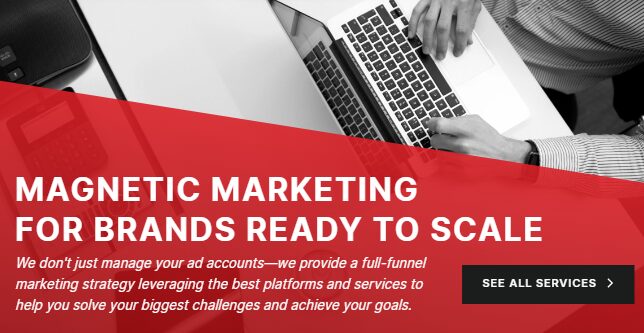
Key Services
The Disruptive Advertising Approach
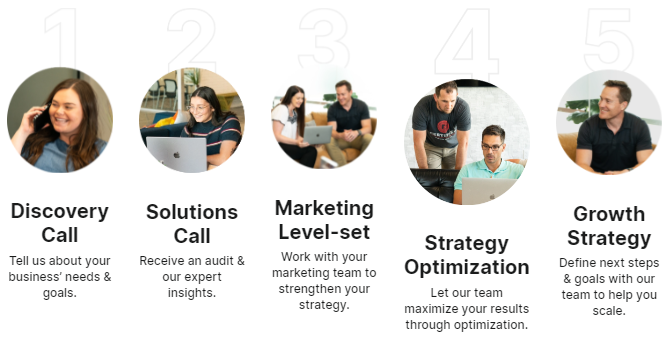

2. Sociallyin
3. SmartSites

Key Services

The SmartSites Approach


4. The Shelf
5. Iron Roots
Key Services
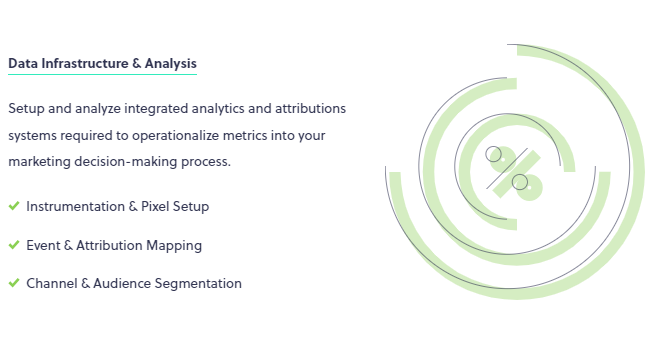
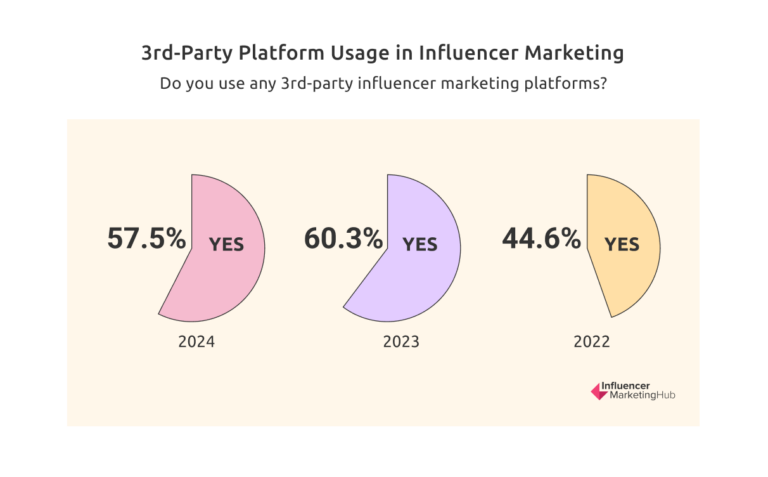
The Iron Roots Approach
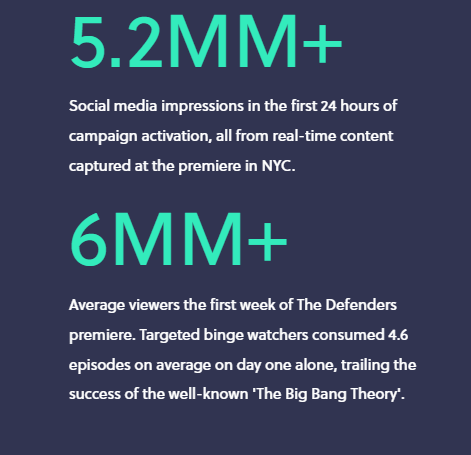
6. Duck.Design
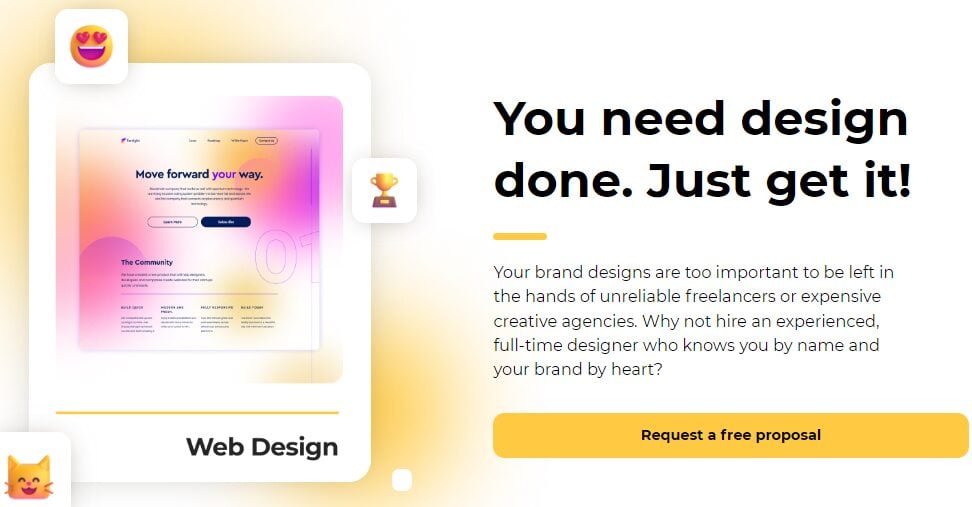
Key Services
The Duck.Design Approach
7. NinjaPromo
8. Huemor
9. Inturact
10. Metric Theory
11. SmartBug Media
12. Bay Leaf Digital
13. Wallaroo Media
14. Cobloom
15. SimpleTiger
16. Kalungi
17. LEADERS
18. Tilt Metrics
19. Directive Consulting

Key Services
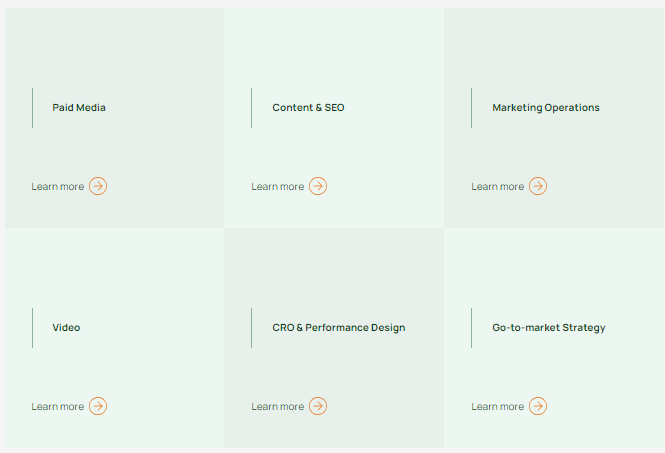
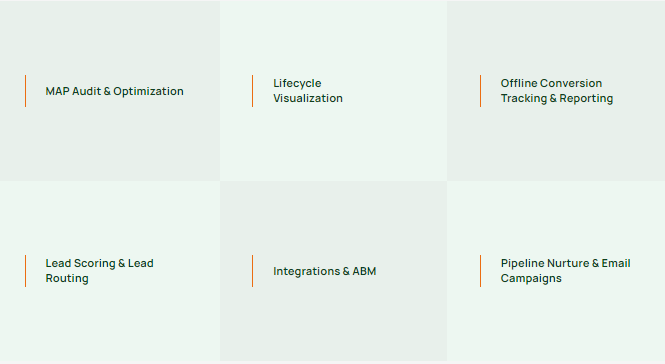
The Directive Consulting Approach

20. Refine Labs
21. HeyDigital
22. Heinz Marketing
23. NoGood
24. Single Grain
Why Hire a B2B SaaS Marketing Agency?
As a B2B SaaS business, you need your product to be out there and be backed by a solid marketing strategy across a multitude of channels, from social media to email marketing. However, with the constant changes in the digital landscape and increasing competition, it can be overwhelming to keep up with all the moving parts of a successful B2B SaaS marketing strategy.
It's not just you. Statista reports that 38% of B2B companies use a blend of outsourced and in-house resources for SaaS marketing.

You don't necessarily have to outsource all SaaS marketing tasks. A notable advantage of working with B2B SaaS marketing agencies is that you are not bound by a one-size-fits-all approach. You can choose which services you need help with and which you can manage in-house, giving you more control over your marketing strategy.
For example, the Content Marketing Institute found that 84% of B2B marketers outsource content creation while 22% hire agencies for content technology. So, it's completely up to you how much or little you want to outsource.
How to Choose the Best B2B SaaS Marketing Agency?
Finding the right B2B SaaS marketing agency may feel challenging, given the number of well-qualified players in the field. While it can be tough to choose, it's possible when you consider the following factors:
Your Unique Business Requirements
B2B marketing agencies have different specializations. Identifying your marketing goals or problems will allow you to determine the specific services your company requires. As a result, you can narrow your search to companies with solutions for those issues.
While some offer full-service marketing, if you only need a specific requirement—such as lead generation or performance marketing—you are better off going to specialists whose expertise can give you the desired results.
Your Unique Budget Requirements
Budget is a primary consideration when deciding to work with an agency. It depends on the scope of work and the timeframe—will it be a one-off project or a long-term partnership?
Understanding your goals will help you stick to your budget when selecting an agency. Weigh the risks and gains. Allotting a higher budget may be wise if the expected outcomes exceed the risks of leaving current marketing challenges unattended or handling them without expert help.
To give you an idea, most marketing budgets are worth 10% to 30% of a B2B SaaS company’s annual revenue. The allocation depends on your business size and growth stage. Clickstrike says the budget would be around 20% to 30% of one's annual revenue for most small starting firms, 10% to 20% for midsize companies, and 10% to 15% or higher for more established organizations.
To translate this in dollar amounts, startups typically earmark around $25K to $75K monthly in digital marketing spend in the early stages, according to DataDab. This budget can rise to between $50K and $150K monthly during the mid/post-product market fit stage. Meanwhile, the amount can range from $100K to $500K monthly in the latter stages of high-growth startups.
Moreover, consider the payment terms. Request a proposal listing detailed costs and ensure you understand how they charge for each service to avoid surprise expenses down the line. Some agencies agree on a pay-per-performance model, which assures that they will exhaust all means to deliver results.
Your Current Marketing Team
If you already have an existing marketing team, assess if the agency you're getting will complement or replace some of your team’s functions. It's also best to engage a marketing agency if your internal marketing team has had previous—and productive—collaborations with external marketing experts.
Find out your prospective partner’s marketing approach to establish if it aligns with your company’s culture and expectations. What are its strategy development process and success metrics? The agency’s answer will help you understand how they will work to achieve your goals and their performance or progress-tracking methods.
Your Tech Stacks
Working with an agency will involve several platforms or software you must be willing to adopt or pay for as part of its overall service. If you have existing ones, consider if they will use them. If they won't, then you must determine if it's a deal breaker for you or not.
Their Reputation
Before choosing a B2B SaaS marketing agency, research their past works and ask around. Verify that what they post is accurate and look for a display of expertise. You don't want to work with the wrong agency that can harm your SaaS growth.
Besides thoroughly reviewing each agency's website for details on services, pricing, past clients, and projects, ask the agency for testimonials from previous or current clients. Look for collaborations involving issues similar to yours and the solution provided by the agency. You can also visit review sites such as TrustRadius, Trustpilot, Gartner, GoodFirms, SoftwareSuggest, SourceForge, and PC Mag.
Their Experience In the B2B SaaS Niche
The agency must have experience using B2B SaaS marketing products and services. Familiarity with tools for specific and various aspects of marketing—such as customer segmentation, social listening, PPC optimization, and others—will allow you to confidently adopt their advice in planning, developing, and executing your marketing campaigns.
Also, research their track record for supporting the scalability of their clients’ marketing gains.
Their SaaS Marketing Expertise
Know your prospect's skill set to ensure it's capable of fulfilling your account-based marketing (ABM) goals in the B2B space. ABM doesn't employ the "interruptive" tactics used in traditional outbound marketing, such as cold calling and direct mail. Instead, it harnesses tech tools that provide you with data for targeted messaging to entities or individuals in organizations that can bring in the most revenues for your company.
Check the agency's online presence to see if they have articles or posts addressing the pain points your business or niche is experiencing. Some common industry challenges include promoting complex products, standing out from the competition, qualifying leads, and navigating the bureaucracy in enterprise-level SaaS.
Evaluate their suggestions and case studies—including client comments—to estimate the likelihood of success if you hire them to solve your problem.
The Future of SaaS Marketing: AI, Machine Learning, and Beyond
47% of businesses expect marketing heads to have a more direct role in driving revenue and growth, according to "The B2B Benchmark Report 2023" by LinkedIn and Ipsos. Under pressure to prove ROI in less time, 2 in 5 CMOs must figure out how to incorporate new tech—such as AI and ML—into their marketing mix. The study adds that AI usage ranks second among the CMOs' top challenges behind client acquisition and before boosting customer engagement.
However, findings by the Marketing Institute showed that marketing teams have forged ahead despite qualms and uncertainties. 64% of surveyed marketers said AI is critical to their success this year. 98% confirmed they’re already using it—either included it in their workflows or experimented with tools. In what ways will AI transform the way B2B SaaS companies do marketing?
Redefinition of Marketing Roles
42% of CMOs in the LinkedIn-Ipsos report said that the future belongs to team members who are eager to adopt new technology. Experts say that AI will replace marketers with mediocre skills. However, it will enhance the output of professionals who combine deep industry research with the appropriate brand tone and their customer’s “buy language.”
Thus, we can expect a rise in the demand for knowledge in delivering AI-driven content generation, segmentation, multi-channel automation, analytics, predictive scoring, and business intelligence.
Necessity of Prompt Engineering
The output of AI software will depend on accurate instructions or prompts. Thus, marketers must learn to prompt the tool or feature to get high-quality content or the answers they need.
Optimization To Stand Out Amid the Rise of Zero-Click Search
With Google's rollout of Search Generative Experience, users aren't likely to click search result links immediately because they can see an overview of answers to their query on top of the SERP.
However, Google will recommend relevant pages if users need more information. Thus, competition will intensify for brands to be included among those suggested web pages. Marketers must optimize for featured snippets—which directly answer common industry questions or your target audience’s common queries—mobile, and omnichannel content distribution.
Ethical AI Adoption
Malicious parties may use AI to tarnish the reputation of competitor brands. Marketing team leaders will invest in social listening solutions for brand monitoring and sentiment analysis to detect and deal with messages that can harm the brand image.
The Evolution of SaaS Marketing: Trends to Watch in 2025
A CloudEagle report revealed that finance departments have had to reduce software spending by as much as 30% amid the global economic slowdown and to keep more money flowing into—than out of—their businesses.
Unfortunately, sales, customer success, and marketing teams are reportedly notorious for accumulating unused apps within a year of acquiring them. The study explained that these teams purchase new apps for immediate requirements and then change tools when faced with new developments.
How will B2B SaaS marketing look in 2025 as companies tighten their belts and take longer to convert?
1. User Experience Will Continue To Be the Top Priority
Siege Media's SaaS Marketing Trends Report says that positive user experience on a SaaS brand's website will continue to drive page sessions and conversions. Customers and search engines will continue to look for these elements:
Sticky Navigation
More companies will adopt sticky navigation on their websites. Sticky navigation refers to navigation bars or menus that stay at the top of the page whether you scroll down or up, giving you easy access to other pages at any time.
86% of SaaS organizations already use this website design on their home pages, while 79% of SaaS blogs follow this navigation type.
However, user research and best practices will determine whether a sticky header will be effective for your website. Online stores and webpages with lengthy text content will benefit the most from sticky navigation. Also, you must know the menu items most commonly used by your customers and target audience. Simple and concise labeling will prevent the sticky bar from distracting users.
Improved Core Web Vitals
SaaS businesses are expected to invest in faster webpage loading, content scannability, and interactive elements to satisfy B2B leads and clients who spend most of their waking hours in front of computer screens. Only 51% of SaaS corporate homepages have a passing CWV (core web vitals) score.
In addition, more industry players will also consider accessible design development or making a website easy to use for people with visual, hearing, or physical disabilities.
AI Features
Siege Media expects more industry players to promote (49%) or expand (64%) the AI capabilities of their offers.
Integrations
93% of SaaS outfits already offer API integrations for seamless access to high-profile systems, such as Salesforce, HubSpot, Slack, and Jira.
Optimization For Mobile
You can't ignore mobile accessibility even if the B2B SaaS clientele works mainly on desktop devices. Over half of consumers use their smartphones to read their emails. Moreover, Google SERPs list mobile-responsive websites first.
Emphasis On Content Marketing
B2B SaaS companies will sustain and build on popular content marketing formats, such as eBooks and articles discussing the "Best X" software type, "Alternatives to (x)," and "Brand X vs. Brand Y" (comparison of two or more software).
2. Pursuing New Opportunities Will Intensify
B2B SaaS teams will identify marketing gaps and opportunities in the following after determining what their current business trajectory is. Based on Powered by Search's 4 Futures Model, your brand status can be stalling, sustaining, scaling, or soaring. Here’s a chart with a description of each status and recommended actions:
Stalling | Sustaining | Scaling | Soaring |
Declining growth (being outpaced by rivals, paused projects, missed goals) due to market changes and budget cuts | Barely hitting targets and struggling to keep up with competitors | Consistently hitting growth targets | Surpassing targets (among the market's top performers) |
Paid media – audit your buying journey SEO - evaluate content for timeliness and value, searching for keywords and CTAs that convert | Paid media – audit your buying journey, landing page experience, and nurture sequences SEO – audit website traffic based on keyword selection, improve blog architecture | Paid media – slowly increase one’s budget to place ads on more channels SEO – aim to rank for lower search volume terms, capture more relevant long tail search terms | Paid media – conduct sentiment monitoring, update messaging to address current pain points SEO – update and refresh high-value posts Demand generation – stay in touch with sales and customer support to determine the fastest-closing leads and which of them have the highest lifetime value |
Regardless of your business trajectory, the 4 Futures Model suggests:
- SEO: optimizing blog design for conversions
- Paid media: conducting incremental (A/B) tests on campaigns
- Demand generation: re-engaging customers through email marketing
Final Thoughts
Hiring a B2B SaaS marketing agency is your best course of action when you're experiencing low-quality leads, poor conversions, lackluster revenues, and a virtually unknown brand.
With tons of experience and expertise developed by numerous SaaS companies, these agencies can produce the results you've been dreaming of. They can help catapult your SaaS to a broader audience and pave the way for massive growth.
We’ve also included a quick guide discussing the future trends and evolutionary changes in the B2B industry and how B2B SaaS marketing agencies are keeping up with them.
Going forward, you should keep up with all these best practices and trends to ensure your product can shine in an increasingly competitive market. With the right B2B SaaS marketing agency by your side, this will become a breeze.
Frequently Asked Questions
What is B2B SaaS Marketing?
B2B SaaS marketing comprises all marketing efforts targeted towards businesses for promoting their Software as a Service (SaaS) product to other businesses. Since the end user is a business and not a customer, the marketing strategies are slightly different. The common marketing tactics used in B2B SaaS marketing include content marketing, social media marketing, email marketing, webinar marketing, and in-person events.
Which other agencies can a B2B SaaS business benefit from?
At Influencer Marketing Hub, we have researched and tested multiple agencies that specifically provide services to B2B businesses. Here are some additional agencies B2B businesses can partner with.
What is the top B2B SaaS marketing agency?
The comparison table below can help you find the best B2B SaaS marketing agency based on your requirements.
|
Agency |
SaaS Services | Supported Platforms | Pricing |
| Disruptive Advertising | Content creation, PPC management (paid search and social advertising), SEO, social media management, email marketing, eCommerce, website optimization | Facebook, Instagram, LinkedIn, Pinterest, Snapchat, X, TikTok |
Over $5,000 |
|
SmartSites |
Website design and development, PPC (paid search and social advertising), SEO optimization, email and SMS marketing, social media management | Amazon, Facebook, Google, Instagram, X, LinkedIn, Pinterest, Reddit, Snapchat, TikTok |
Over $1,000 |
|
Directive Consulting |
PPC management (including paid search and social advertising), content and SEO, lifecycle marketing, creative (including video), go-to-market (GTM) strategy | Facebook, Google, Instagram, X, LinkedIn, Pinterest, Reddit, Snapchat, TikTok |
Over $5,000 |
|
Iron Roots |
Growth Strategy, Channel & Audience Segmentation, Media Buying, Community Management, Content Creation, Influencer Marketing | Facebook, Instagram, X, YouTube | Over $5,000 |
| Duck.Design | SaaS MVP, Product Analytics, Brand Guide Creation, UI/UX Design | Website |
Over $1,000 |
|
Sociallyin |
Social media strategy and management, community management and listening, content production, paid social advertising, influencer marketing, social selling, data analysis and ROI modeling, AR services | Facebook, Instagram, LinkedIn, TikTok, X, YouTube | Over $5,000 |
| The Shelf | Influencer marketing (with fraud detection), social media marketing, branding, campaign strategy and planning, whitelisting, performance tracking and analytics | Blog, Discord, Facebook, Instagram, LinkedIn, TikTok, X, YouTube, Pinterest, Twitch |
Over $100,000 |
Which is the best B2B SaaS marketing agency for my business?
You can choose the most ideal B2B SaaS marketing agency for your business based on our comparison table. We have also included a column for ‘’notable clients’’ to help you find agencies that have past experience in your industry.
|
Agency |
Speciality | Best For | Notable Clients |
| Disruptive Advertising | SaaS marketing | Businesses of all sizes |
Tigerpaw, Americas Best Franchises, SlickText |
|
SmartSites |
Full-service | Small and medium-sized businesses | Agile Data Sites, Anexio, Flight Courtier |
| Directive Consulting | Performance marketing | Mid Market enterprises |
WordPress, Sumo Logic, Seagate Technology, OneSpan |
|
Iron Roots |
Growth strategy | Startups and enterprises | Gillette, DC, Warner & Bros, Netflix, Stanford University, Gopuff |
| Duck.Design | SaaS product design | Small and medium companies |
One the spot, Octo, Funne |
|
Sociallyin |
Social media marketing | Businesses of all sizes | NetApp, Incomm, First Trade, Clinical Trial Media |
| The Shelf | Influencer marketing | Medium and small businesses |
The Smile Generation, Greenvelope, Blued |
What does a B2B SaaS marketing agency do?
B2B SaaS marketing agencies handle marketing tasks for SaaS businesses. These can range from content creation and social media management to lead generation and sales enablement. Some agencies also assist in social experiential marketing and webinar marketing.
What to look for in a B2B SaaS marketing agency?
When looking for a B2B SaaS marketing agency, look at the following factors: relevant experience, services, success stories, communication style, and pricing. If you want a customized plan, you should seek an agency that's ready to create one for you.
How much do B2B SaaS marketing agencies charge?
Most B2B SaaS marketing agencies offer custom pricing based on the client's needs. The pricing can be as low as $1,000 per month or as high as $50,000+ for a project, depending on the services and scope of work.
Which services does a B2B SaaS marketing agency provide?
A B2B SaaS marketing agency can provide a host of services, including but not limited to content creation, social media marketing, product design, email marketing, influencer marketing, lead generation, and sales enablement. Some agencies also offer services like search engine optimization (SEO), pay-per-click (PPC) advertising, and conversion rate optimization (CRO).
Can B2B SaaS marketing agencies handle global campaigns?
While not all B2B SaaS marketing agencies may have experience in global campaigns, many reputable ones do. You should discuss your international marketing needs with an agency beforehand to determine if they can handle it effectively.
Which is the best B2B SaaS marketing agency for startups?
Iron Roots is a remarkable B2B SaaS marketing agency that specializes in working with startups. The agency's specialty lies in growth strategy creation, which it employs to help startups go to market with their services.



